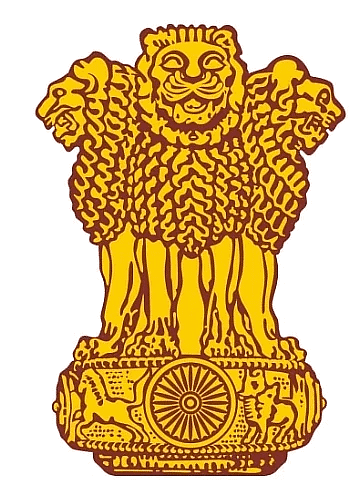The Indian Government - 1 Class 5 Worksheet SST
 Q1: Multiple Choice Questions (MCQs)
Q1: Multiple Choice Questions (MCQs)
(i) The Union Government is also known as
(a) Lok Sabha
(b) Rajya Sabha
(c) Central Government
(d) Union Territory
Ans: (c)
The Union Government, also known as the Central Government, governs the entire country. It is responsible for national matters like defense and foreign affairs.
(ii) The set of rules according to which our country is run is called the
(a) Parliament
(b) Constitution
(c) Supreme Court
(d) Government
Ans: (b)
The Constitution is a set of fundamental rules that outline how the country is governed, defining powers and rights. It is the supreme law of the land.
(iii) The number of constituencies India has been divided into is
(a) 543
(b) 552
(c) 553
(d) 530
Ans: (a)
India is divided into 543 constituencies for the Lok Sabha. Each constituency elects one Member of Parliament (MP).
(iv) The defense of our country is the responsibility of the
(a) Central Government
(b) State Government
(c) Local Government
(d) All of these
Ans: (a)
The defense of the country is the responsibility of the Central Government, including matters related to armed forces and national security.
(v) The Lok Sabha is presided over by the
(a) President
(b) Prime Minister
(c) Speaker
(d) Government
Ans: (c)
The Lok Sabha, the lower house of Parliament, is presided over by the Speaker, who maintains order and enforces rules.
(vi) The head of the Government of India is
(a) Prime Minister
(b) President
(c) Speaker
(d) Vice President
Ans: (a)
The head of the Government of India is the Prime Minister, who leads the administration and policy execution.
Q2: True or False
(i) Rajya Sabha the meeting is presided by Vice-President.
(ii) The full form of EVM is Electronic Voting Machine.
(iii) 15th Lok Sabha Election of 2014 was the largest democratic election in the world.
(iv) Constituencies are the smaller divisions of our country made for fair elections.
(v) Sansad Bhawan is another name for the Parliament of India. True
Ans:
(i) True
(ii) True
(iii) False
(iv) True
(v) True

Q3: Short Answer Type Questions
(i) Name the three levels of government in India.
Ans:
- Local Government
- State Government
- Central or Union Government
(ii) Why do we have three levels of government in our country? Would it not be easier to have just the Central Government?
Ans: India is a huge country and it is not possible for a single government to look after the entire country properly. So, we have three levels of government in our country.
(iii) Who is the head of (a) our country, (b) the Central Government?
Ans:
(a) The Head of our country is the President.
(b) The Head of the Central Government is the Prime Minister.
(iv) List two responsibilities each of (a) the Central Government, (b) the State Government.
Ans: (a)Responsibilities of the Central Government
- Defense of our country
- Relationship with other countries
(b) Responsibilities of the State Government
- Education Facilities
- Law and Order of the state
- Health Facilities
(v) What is the responsibility of the courts?
Ans: The courts protect the fundamental rights of the people and dispense justice to the people in case of conflicts.
(vi) Which is the highest court in the country?
Ans: The Supreme Court in New Delhi is the highest court in India.
|
33 videos|423 docs|50 tests
|
FAQs on The Indian Government - 1 Class 5 Worksheet SST
| 1. What is the role of the Indian Government? |  |
| 2. How is the Indian Government structured? |  |
| 3. What are the functions of the President of India? |  |
| 4. How are laws made in India? |  |
| 5. How does the Indian Government ensure the welfare of its citizens? |  |
















